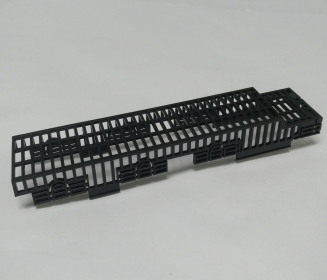
In recent days, there are several departments in the Mainland that will introduce measures to support the photovoltaic industry and start projects worth a total value of 70 billion yuan. The other also refers to the National Energy Board's intention to propose an implementation method for distributed photovoltaic power generation demonstration areas, and its The subsidy standard, which subsidizes the sales price, stimulated the long-standing accumulation of photovoltaic-related shares.
Although the Mainland has always supported the development of new energy industries, due to the excessive expansion of the industry in the early years, the global economy has suffered a series of declines in recent years. The first was a financial tsunami and the other was the debt crisis in Europe. As a result, the capacity utilization rate of the photovoltaic industry declined significantly, and excess capacity was created. Structural problems, and due to fierce competition within the industry, companies in order to order, so that product prices and corporate profitability further pressure.
Pay attention to the process of industry consolidation
Moreover, since the mainland's photovoltaic industry is mainly export-oriented, the overseas market accounts for over 90% of the total, while Europe accounts for 60% of the mainland's photovoltaic industry. The European debt crisis is raging. The major PV users are reducing PV subsidies. Combat all public photovoltaic companies that rely on exports. Furthermore, the European Union’s investigation into anti-subsidy anti-dumping measures of photovoltaic companies in the Mainland is another factor. If the complaint is established, import tariffs on photovoltaic products in the Mainland will be greatly increased, weakening the competitiveness of the products and increasing the company’s costs. For the photovoltaic industry, it is bound to constitute a greater disadvantage.
The mainland authorities hope to support the development of the photovoltaic industry through subsidies, so as to achieve the effect of “export to domestic demandâ€. However, changes in the power generation structure in the Mainland, as well as the perfection of power grid connection and power distribution, will take time, and it will be difficult in the short term. Increasing the proportion of photovoltaic power generation, relying solely on individual policies, will hardly have a retroactive effect on the photovoltaic industry. The main problems facing the photovoltaic industry in the Mainland are that there are too many industry players, excess production capacity, and reduced product bargaining power. The authorities need to speed up the pace of industry consolidation, increase industry concentration, and optimize industry structure. This is a long-term process for the industry. Development is believed to be more beneficial.
However, due to the reduction of foreign PV subsidies, the demand from the Mainland has not been excessively expected. Even if the relevant shares in the PV industry show signs of rising recently, the outlook is still relatively cautious. At this stage, it is only appropriate to implement the policy for short-term delivery, and the mainland photovoltaic industry Whether it will make a turn for the better, besides being subject to the ring-ball economy and the launch of the photovoltaic industry, we must also pay attention to the process of industry consolidation.
In contrast, other new energy sources, such as nuclear power and wind power, have better prospects than the photovoltaic industry. According to statistics from the State Electricity Regulatory Commission, the first nine months of wind and nuclear power generation have increased by 31.8% and 10.7% year-on-year, respectively. Wind power and nuclear power generation installed capacity of power plants above 6,000 kilowatts have also recorded 37.2% and 5.6% respectively. The year-on-year growth, in which the authorities resumed nuclear power construction, orders for nuclear power equipment stocks are expected to regain momentum, it is worth noting.

The Plastic Ups Drive Housing is what we call a floppy drive, and it's called floppy disk drive. It's a device that reads a 3.5-inch or 5.25-inch floppy disk. The most commonly used today is the 3.5-inch floppy drive, which can read and write 1.44MB of 3.5-inch floppy disk. The 5.25-inch floppy disk has been phased out and is rarely seen.
Floppy drive device built - in and external two. The built-in floppy drive USES the special FDD interface, while the external floppy drive is generally used for the laptop, using the USB interface.
With the development of computer, these disadvantages are gradually obvious: too small capacity, slow reading and writing speed, poor service life and reliability of floppy disk, and easy loss of data, so floppy drive has been replaced by other devices. New computers are no longer equipped with floppy drives, and personal computer users are no longer equipped with floppy drives.
Customize Plastic Ups Drive Housing
Plastic Ups Drive Housing,High Power Metal Housing,Plastic Power Housing Part
Timeplex Industrial Limited , http://www.timeplex-hk.com